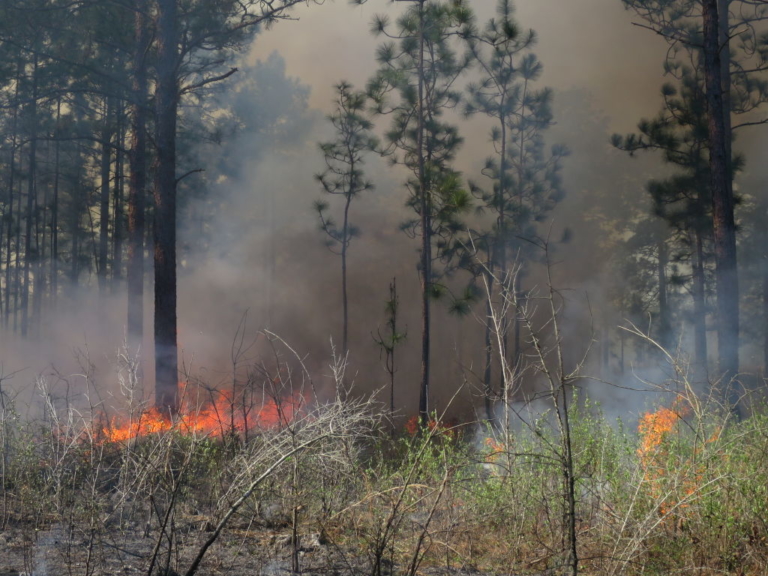Strategic forest and wildland fire management is necessary to safeguard urban water supplies

Forest landscapes are key resource areas for urban water supplies. All forests combined generate an estimated 57% of runoff worldwide, and provide water for more than 4 billion people. Water supply is one of several critical water services provided by forests—other water services are hydropower, providing cooling water for electric power plants, water for irrigation, and reducing flood risk. But forests are at the same time vulnerable ecosystems, and their ability to provide clean water is experiencing increased pressure from urbanization and the effects of human encroachment on the forest.
The increasing pressure on water supplies originating in upstream forests is partially linked to an upward trend in the number of wildfires ignited by humans. Despite their hazard to humans, occasional wildfire can be beneficial for the health and function of fire-adapted ecosystems through its effects on nutrient cycling, plant diversity and succession, and pest regulation. Like prescribed burning, this type of infrequent wildfire also reduces the risk of subsequent wildfires until a forest has accumulated sufficient fuels for another fire.
However, extremely hot wildfires are a different story. Such fires not only cause vast destruction, but can also lead to erosion, gullying, soil loss and flooding, and sometimes even debris flows and flash floods that can pollute municipal water supplies. When large enough, wildfires can also alter the amount of water delivered by upstream forests on an annual basis, and this introduces a factor of uncertainty in seasonal projections of water availability and water quality. To learn more about wildfire impacts on water yields across the country, check out this USDA Forest Service technical report that my colleagues and I published in June 2019.
Strategic forest management can contribute substantially to the reliability of urban water supplies, and examples abound. In the Northeastern United States, New York City invested around $1.5 billion dollars in city watershed protection over the course of 10 years, saving more than $6 billion dollars in capital cost and $300 million dollars in annual operating costs. Research by Postel and Thompson shows that similar benefits have been realized at a smaller scale in cities like Boston, Seattle, Portland (Oregon), Syracuse and Auburn (Maine).
Urban water supplies in Southeast states can also benefit from forest management. This region is facing serious challenges in terms of water resilience, caused by increased water demand, especially during the summer in urban areas (like the Atlanta metropolitan area) and agricultural areas (Southwest Georgia). While the local water demand increases, precipitation rates have decreased over the past decades and summer precipitation deficits are becoming more frequent. These droughts cause a significant decline in river water levels over the summer, and have severe economic impacts.
After many decades of loblolly pine production, large portions of land along the South Atlantic coastal plain are being reconverted into native longleaf pine savanna. The restored landscapes are managed with prescribed burning to release the nutrients in vegetative residues back to the landscape and maintain an open canopy. With its open canopy, longleaf pine savanna allows for lower evapotranspiration, lower water demand and greater drought tolerance compared with dense loblolly pine dominated forests. Although water resources are not the main focus of longleaf pine restoration, there are important benefits for water supplies.
In our paper in the upcoming special edition of Unasylva, the Food and Agriculture Organization of the United Nations’ forestry flagship journal, we reveal that longleaf pine restoration has the potential to substantially increase surface water delivery in the 14,160 square mile Altamaha River basin in Georgia. We estimate that large-scale longleaf pine restoration in the coastal portion of the basin could increase the overall annual water yield by 2.6%. That is an extra 121 billion gallons, enough to fill 11 million backyard pools, or 184,000 Olympic-size swimming pools! The relative increase could be even greater locally.
Urbanization will continue to increase the pressure on water supplies in the foreseeable future, but a primary land management objective of longleaf pine restoration maintained with prescribed burning, can have a positive impact on the availability of surface water. Ultimately though, the true relief of water stress has to come from a change of heart: conserve water whenever you can.
The special edition of Unasylva (available in English, French and Spanish) will be published in November 2019 to coincide with United Nations Framework Convention on Climate Change 25th session of the Conference of the Parties (COP 25). Contributors: Dennis W. Hallema, Alicia M. Kinoshita, Deborah A. Martin, François-Nicolas Robinne, Mauricio Galleguillos Torres, Steven G. McNulty, Ge Sun, Kunwar K. Singh, Rua S. Mordecai and Peter F. Moore.
This research is funded by the U.S. Fish and Wildlife Service. Any opinions, findings, conclusions, or recommendations expressed in this article are those of the author and do not necessarily reflect the policies and views of the United States Government.